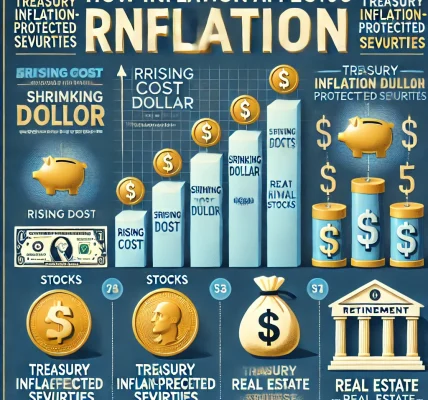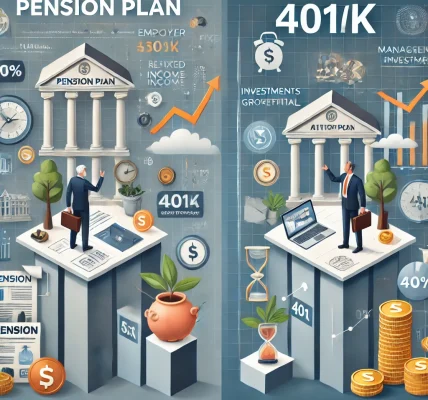Planning for retirement is a long-term financial commitment that requires strategic investment decisions to ensure a secure and comfortable future. With various investment options available, choosing the right strategies can significantly impact your retirement savings. This guide explores top investment strategies to help you maximize your retirement funds efficiently.
Why Investment Strategies Matter for Retirement Savings
Investing wisely for retirement is essential because:
- Inflation reduces the purchasing power of savings over time.
- Market fluctuations affect investment returns.
- Longevity requires a sustainable income post-retirement.
- Proper allocation of assets can maximize growth while minimizing risks.
By implementing the right investment strategies, you can grow your retirement savings while mitigating financial uncertainties.
Key Investment Strategies to Boost Your Retirement Savings
1. Start Investing Early
One of the most effective ways to grow your retirement savings is to start investing as early as possible. The power of compounding allows your investments to grow exponentially over time.
Benefits:
- More time for investments to grow.
- Reduced financial burden later in life.
- Higher returns due to compounding interest.
2. Maximize Employer-Sponsored Plans
If your employer offers a retirement plan such as a 401(k) or 403(b), take full advantage of it. Many employers offer matching contributions, which is essentially free money added to your retirement fund.
Best Practices:
- Contribute at least enough to get the full employer match.
- Increase contributions as your salary grows.
- Choose diversified investment options within the plan.
3. Diversify Your Investments
Diversification reduces risk by spreading investments across different asset classes such as stocks, bonds, real estate, and mutual funds.
Recommended Allocation:
- Stocks: Higher returns, but more volatility.
- Bonds: Stability and regular income.
- Real Estate: Hedge against inflation and market fluctuations.
- Mutual Funds & ETFs: Professionally managed and diversified.
4. Utilize Individual Retirement Accounts (IRAs)
IRAs provide tax advantages that help maximize your savings.
Traditional IRA
- Contributions are tax-deductible.
- Taxes are deferred until withdrawals during retirement.
- Ideal for individuals expecting a lower tax bracket in retirement.
Roth IRA
- Contributions are made with after-tax income.
- Withdrawals are tax-free in retirement.
- No required minimum distributions (RMDs).
5. Invest in Low-Cost Index Funds and ETFs
Low-cost index funds and ETFs are ideal for long-term investors due to their low fees and broad market exposure.
Why Choose Them?
- Lower expense ratios compared to actively managed funds.
- Consistent returns by tracking market performance.
- Minimal effort required for management.
6. Rebalance Your Portfolio Regularly
As you get closer to retirement, adjusting your asset allocation ensures that your portfolio aligns with your risk tolerance and financial goals.
Steps to Rebalance:
- Review asset allocation yearly.
- Shift from high-risk assets (stocks) to safer investments (bonds and fixed income) as retirement nears.
- Avoid emotional decision-making during market fluctuations.
7. Take Advantage of Tax-Efficient Investing
Taxes can significantly impact investment returns. Using tax-efficient strategies can help maximize savings.
Tax-Saving Strategies:
- Invest in tax-advantaged accounts like 401(k), Roth IRA, and HSA.
- Hold investments long-term to benefit from lower capital gains taxes.
- Use tax-loss harvesting to offset capital gains.
8. Consider Real Estate Investments
Real estate can be a valuable addition to your retirement portfolio by providing steady rental income and potential appreciation.
Options Include:
- Rental properties for passive income.
- Real Estate Investment Trusts (REITs) for diversification.
- House hacking (living in one unit while renting others) for cost savings.
9. Delay Social Security Benefits
Delaying Social Security benefits can significantly increase your monthly payout.
Key Takeaways:
- Benefits increase by about 8% per year for each year you delay beyond the full retirement age (up to 70).
- Waiting ensures higher lifetime earnings, especially if you expect to live longer.
10. Work with a Financial Advisor
A professional financial advisor can help create a personalized investment strategy that aligns with your risk tolerance, retirement goals, and financial situation.
When to Seek Help?
- If you’re unsure about asset allocation.
- When facing major life changes like marriage, inheritance, or job loss.
- To ensure you’re on track with retirement goals.
Final Tips for Maximizing Your Retirement Investments
- Increase Contributions Over Time – As your income grows, allocate a higher percentage to your retirement savings.
- Avoid High Fees – Choose low-cost investment options to retain more of your earnings.
- Stay Disciplined – Avoid panic selling during market downturns.
- Plan for Healthcare Costs – Use an HSA to save for medical expenses tax-free.
- Monitor Retirement Progress – Regularly review your retirement savings and make adjustments when needed.
Conclusion
Maximizing your retirement savings requires a well-planned investment strategy that aligns with your financial goals. By starting early, diversifying assets, optimizing tax benefits, and leveraging employer-sponsored plans, you can build a strong financial foundation for a comfortable retirement. Take proactive steps today and secure your future!




